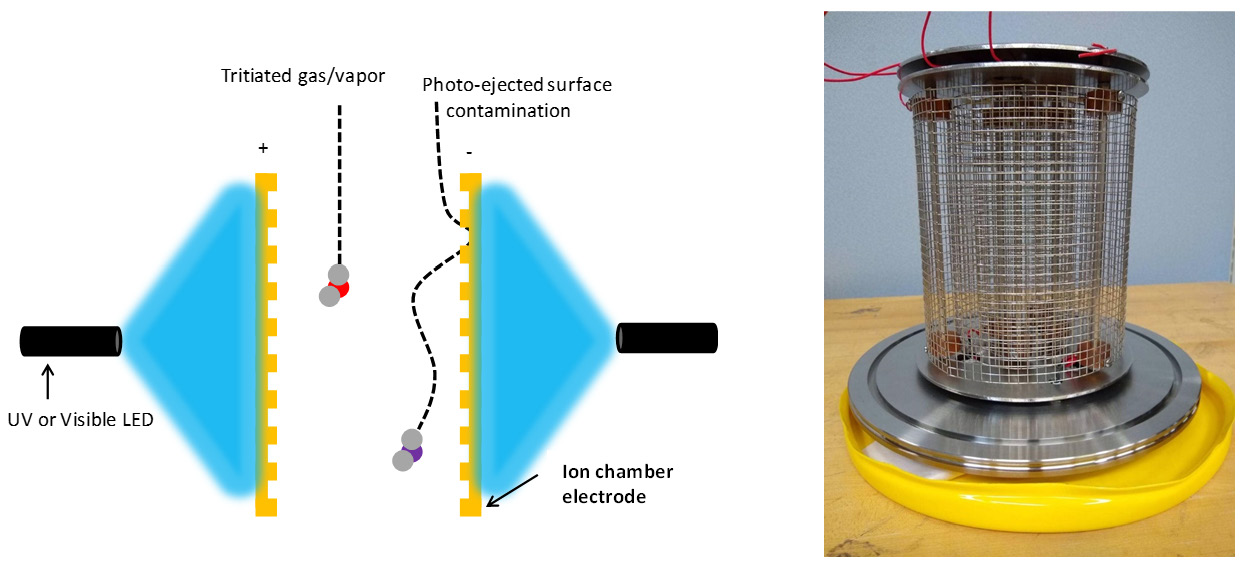Tech Briefs
Savannah River National Laboratory
LED-integrated, Self-cleaning Ion Chambers
Technology Overview
Savannah River National Laboratory has developed radiation detectors that harness light emitting diodes (LEDs) to remove contamination from detector surfaces, while they are in operation. Such self-cleaning radiation detectors are particularly important for measuring tritium because it readily incorporates into other materials due to hydrogen isotope exchange.

Schematic of the LED photo-cleaning concept for ion chambers. (right) Prototype LED-integrated stainless steel ion chamber for glovebox monitoring.
Benefits
- Safer and more accurate glovebox monitoring
- Minimize the risk of worker exposure
- Reduced costs and effort
Applications and Industries
- Fusion Facilities
- Fission Power Plants
- Defense Technologies
- Medical Isotope Production
Description
Ion chambers are type of radiation detector that are used to measure the concentration of tritium in the gas phase. However, ion chambers gradually become covered with tritiated surface contaminants, which create a large background signal that obscures measurement. Previous efforts to reduce this “memory effect” include using gold coatings and electrodes with reduced surface areas. These approaches add to the cost and complexity of the instrument and only slow down the effect, instead of preventing it. Therefore, ion chambers must be periodically cleaned by hand, which increases the risk of worker exposure and instrument breakage. Periodic cleaning also does not address tritium level ambiguities created by an increasing background signal. An ideal solution to this issue would be to either develop an ion chamber that does not accrue surface contamination, or one that is self-cleaning while it is in operation.
This technology uses LED light illumination to desorb contamination from ion chambers while they are in operation, preventing the appearance of the negative effects of surface contamination. The concept benefits from the rapid improvement in LED technology that affords robust, long-lasting, and powerful light sources that can stimulate desorption. In addition to the benefits of a backgroundless ion chamber, this technology represents a large potential cost saving by negating the need for gold coatings because it works on both gold and other surfaces, such as stainless steel.
Intellectual Property
- Patent No. 10,790,070 – Radiation Detectors Employing Contemporaneous Detection and Decontamination
- Prototype built and tested
- Available for licensing
Partnering Opportunities
SRNL invites interested companies with proven capabilities in this area of expertise to develop commercial applications for this process under a cooperative research and development agreement (CRADA) or licensing agreement. Interested companies will be requested to submit a business plan setting forth company qualifications, strategies, activities, and milestones for commercializing this invention. Qualifications should include past experience at bringing similar products to market, reason-able schedule for product launch, sufficient manufacturing capacity, established distribution networks, and evidence of sufficient financial resources for product development and launch.
Download Tech Brief
Contact Information
Savannah River National Laboratory
E-mail: partnerships@srnl.doe.gov